In the sphere of health communication, plain language emerges as an inspiration of clarity amid the frequently convoluted terrains of complexity. It acts as a crucial link between senders and receivers, embodying a firm dedication to ensuring that information is not just conveyed but understood accurately and effortlessly. Plain language, at its core, goes beyond superficial linguistic appeal; it embodies a deliberate approach that emphasises clarity, coherence, and accessibility. It serves as a pivotal conduit between communicators and recipients, embodying a steadfast commitment to ensuring that information is not only transmitted but comprehended with precision and ease. Plain language, fundamentally, surpasses mere linguistic aesthetics; it represents a strategic methodology that prioritises clarity, coherence, and accessibility.
In an era characterised by pervasive information saturation and fleeting attention spans, the relevance of plain language cannot be overstated. It functions as a linguistic guide, ushering recipients through the maze of text with clarity and conciseness. By discarding extraneous jargon, convoluted syntax, and opaque terminology, plain language illuminates the pathway to comprehension, facilitating meaningful interaction between communicator and audience.
Furthermore, plain language is not a uniform solution; rather, it embodies a dynamic and adaptable framework that accommodates the diverse needs and expectations of its audience. Whether disseminating intricate scientific findings to the general population or drafting legal documents for laypersons, the tenets of plain language endure, advocating for clarity, transparency, and inclusivity.
Historical Context and Contemporary Definition
Though often associated with contemporary communication paradigms, plain language traces its origins back to ancient times. Its essence resonates through the teachings of ancient rhetoricians who championed clarity and elegance in expression. Figures such as Quintilian, renowned for their contributions to rhetoric and education in the 1st century, advocated for simplicity instilled with style to ensure the accurate and graceful conveyance of messages.
Across the ages, the pursuit of effective communication has persisted, evolving alongside shifts in language, technology, and societal mores. In the modern era, plain language has emerged as a cornerstone of effective communication methodologies, merging ancient wisdom with contemporary insights into linguistic psychology and information design.
Defined as communication that prioritises clarity, coherence, and accessibility, plain language transcends superficial linguistic considerations to encompass a strategic approach to communication. It surpasses mere simplification of language or streamlining of syntax; rather, it constitutes a holistic framework that integrates meticulous considerations of language, structure, and design. At its essence, plain language endeavours to bridge the divide between communicator and recipient, ensuring that information is not only conveyed but comprehended with precision and ease.
Brian Garner, a luminary in legal writing and language usage, encapsulates the essence of plain language with his definition: “the idiomatic and grammatical use of language that most effectively presents ideas to the reader.” This definition underscores the significance of clarity, coherence, and relevance in communication, emphasising the necessity of language that resonates with its audience and facilitates understanding.
Furthermore, the recent issue of Standard 24495-1:2023 by the International Organisation for Standardisation (ISO) marks a noteworthy milestone in the formalisation of plain language principles. This document provides guiding principles and directives for plain language communication, catalysing widespread interest and discourse within the linguistic community.
ISO Standardisation and RAISE Principles
The advent of Standard 24495-1:2023 by the ISO represents a significant stride in the endeavour to formalise and standardise the principles of plain language communication. This seminal document, titled “Plain language – Part 1: Governing principles and guidelines,” serves as a guide for practitioners and organisations navigating the complexities of contemporary communication.
Within the pages of this comprehensive standard, the intricacies of plain language are meticulously constructed, delineating guiding principles and offering pragmatic directives for implementation. It constitutes a foundational framework upon which practitioners can cultivate their understanding and practice of plain language communication.
At the core of the ISO standard lies a set of principles known as the RAISE framework, devised to encapsulate the essential dimensions of effective plain language intervention. RAISE stands as an acronym for Relevance, Accessibility, Intelligibility, Suitability, and Efficacy, each embodying a crucial facet of successful communication.
Relevance underscores the imperative of aligning content with its intended purpose, ensuring that topics are selected and addressed in a manner that resonates with the target audience. Accessibility focuses on dismantling barriers to information access, encompassing considerations such as publication format, design, and linguistic accessibility.
Intelligibility explores the clarity and coherence of language, emphasising the significance of grammatical accuracy, cohesion, and coherence in conveying meaning effectively. Suitability encompasses the adaptation of style, tone, and register to cater to the needs and preferences of the intended audience, acknowledging cultural nuances and linguistic conventions.
Lastly, Efficacy evaluates the effectiveness of communication throughout its lifecycle, from conception to dissemination and beyond. It entails the utilisation of appropriate methodologies and metrics to assess the impact of written content, ensuring that it achieves its intended objectives and resonates with its intended audience.
Collectively, these RAISE principles provide a robust framework for plain language intervention, guiding practitioners in the creation of content that is not only clear and concise but also relevant, accessible, and impactful. As organisations endeavour to augment their communication efficacy and accessibility, the RAISE principles serve as invaluable instruments for realising these objectives and fostering meaningful engagement with diverse audiences.
Exploring the RAISE Principles
Exploring the RAISE framework reveals a structured approach to comprehending and implementing plain language communication strategies. Each dimension—Relevance, Accessibility, Intelligibility, Suitability, and Efficacy—serves as a cornerstone in the development of content that resonates, elucidates, and inspires action.
Relevance: At the crux of effective communication resides the principle of relevance. This dimension necessitates that content be meticulously aligned with its intended purpose, ensuring that each word serves a meaningful function. By discerning the explicit needs and expectations of the target audience, writers can design content that not only captures attention but also delivers value and significance.
Accessibility: Implementation the ethos of inclusivity, accessibility dismantles barriers to information, bestowing universal access to knowledge. From publication format to design aesthetics, every facet of content is meticulously curated to facilitate seamless navigation and comprehension. By championing linguistic accessibility and accepting diverse modes of communication, writers allow audiences of all backgrounds and abilities to engage with content on their own terms.
Intelligibility: Clear, concise, and coherent, these constitute the hallmarks of intelligibility. This dimension mandates that language be employed with precision, clarity, and purpose, enabling readers to traverse the textual environment with ease. By adhering to grammatical correctness, fostering cohesive narratives, and obliterating ambiguity, writers unlock the transformative potential of intelligibility, illuminating the pathway to comprehension and insight.
Suitability: Customising content to the unique needs and preferences of the audience lies at the heart of suitability. This dimension transcends linguistic conventions, exploring cultural nuances, stylistic preferences, and audience expectations. By implementing empathy and cultural sensitivity, writers forge connections that transcend language barriers, fostering deeper engagement and resonance with diverse audiences.
Efficacy: The litmus test of communication effectiveness lies in its efficacy. This dimension necessitates a rigorous evaluation of content throughout its lifecycle, from inception to dissemination and beyond. By leveraging data-driven insights and soliciting feedback from stakeholders, writers refine and optimise content to maximise its impact and relevance. Ultimately, efficacy serves as the compass guiding writers on their quest to create content that inspires action, drives change, and ignites meaningful dialogue.
Together, these RAISE principles provide a robust framework for plain language intervention, allowing practitioners to create content that is not only clear and concise but also relevant, accessible, and impactful. By implementing these principles as guiding lights, writers board on a journey of transformation, illuminating the pathway to effective communication and fostering deeper connections with audiences far and wide.
Translation Strategies for Lay Audiences
When endeavouring to translate technical content for lay audiences, employing robust strategies is imperative to ensure clarity and comprehension. Here are four key approaches:
Stepwise Process for Clarity: Translating technical terminology into lay language is not merely a matter of substitution; it necessitates a methodical approach. Begin by refining the technical version itself, ensuring that it adheres to principles of clarity and coherence. Streamline complex concepts, simplify convoluted sentences, and organise information in a logical progression. By laying this groundwork, you establish a foundation for creating lay-friendly content that is both accessible and engaging.
Ensuring Basic Accuracy: Before commencing the translation process, it is imperative to conduct a thorough review of the lay version to ensure basic accuracy. This involves scrutinising the text for common errors such as subject-verb agreement discrepancies, ambiguous references, punctuation inconsistencies, and the lack of parallel structures. By rectifying these issues upfront, you mitigate the risk of confusion and enhance the readability of the translated content.
Project-Specific Glossaries: Technical terminology often harbours layers of meaning that may be opaque to lay audiences. To facilitate comprehension, consider developing project-specific glossaries customised to the communication objectives at hand. These glossaries aim to elucidate the essential meanings of technical terms relevant to the specific project or subject matter. By providing clear and concise explanations within the context of the project, you authorise readers to grasp complex concepts with greater ease.
Utilising Storytelling and Imagery: Storytelling and imagery serve as potent tools for elucidating concepts and captivating lay audiences. Incorporate relatable narratives, analogies, and visual representations to make abstract ideas more tangible and engaging. Create compelling stories that contextualise technical information within everyday experiences, fostering deeper understanding and resonance. Additionally, leverage visual aids such as diagrams, infographics, and illustrations to complement textual explanations, further enhancing comprehension and retention.
By integrating these translation strategies into your approach, you can effectively bridge the gap between technical content and lay audiences, fostering greater understanding, engagement, and authorisation. Through thoughtful adaptation and creative expression, you allow readers to access and absorb complex information with confidence and clarity.
Lay Language as a Democratising Tool
Recognising the pivotal role of lay language as a democratising force sheds light on its profound implications across various domains. Here’s an exploration of its significance:
Benefits of Accessibility and Inclusivity: Implementing lay language democratises access to knowledge by dismantling barriers to comprehension. By distilling complex concepts into clear and relatable language, information becomes accessible to a broader audience, irrespective of educational background or expertise. This inclusivity fosters a more equitable society where individuals from diverse walks of life can engage with and contribute to the discourse surrounding critical issues.
Implications for Various Fields: The democratising power of lay language reverberates across diverse fields, from healthcare and education to law and policymaking. In healthcare, clear and concise communication authorises patients to make informed decisions about their health, promoting autonomy and self-advocacy. Similarly, in education, lay language enhances learning outcomes by ensuring that educational materials are comprehensible to students of varying abilities and backgrounds.
The Role of Lay Language in Knowledge Dissemination: At its core, lay language serves as a catalyst for knowledge dissemination, enabling important findings and insights to reach a broader audience. Whether it’s scientific research, legal documents, or policy briefs, translating technical content into lay language facilitates greater understanding and engagement. This aspect is particularly crucial in fields where informed decision-making relies on access to accurate and comprehensible information.
By democratising access to knowledge and fostering inclusivity, lay language emerges as a potent tool for encouraging individuals, driving social change, and promoting democratic ideals. As society continues to confront complex challenges, the role of lay language in facilitating communication and understanding remains indispensable. Through concerted efforts to prioritise clarity, accessibility, and inclusivity, we can utilise the democratising power of lay language to build a more informed, authorised, and equitable world.
Strategies for Accessible Communication
As we conclude our exploration of accessible communication, it becomes evident that employing effective strategies is paramount for ensuring that information reaches and resonates with diverse audiences. Let’s explore the key strategies outlined:
Prioritise Clarity and Simplicity: Clear and concise communication lies at the heart of accessibility. By prioritising simplicity in vocabulary, sentence structure, and overall presentation, communicators can ensure that information is easily understood by individuals with varying levels of literacy and cognitive abilities. Complex concepts should be broken down into digestible chunks, fostering comprehension and engagement.
Plain Language Principles: Plain language principles serve as guiding lights in the quest for accessibility. By employing strategies such as using familiar words, organising information logically, and eliminating unnecessary jargon, communicators can enhance the accessibility and inclusivity of their content. Plain language ensures that information is accessible to all, regardless of educational background or expertise in the subject matter.
Utilise Visual Aids: Visual aids are powerful tools for enhancing comprehension and retention, particularly for individuals with diverse learning styles. Incorporating diagrams, infographics, and illustrations alongside textual content can help reinforce key concepts and make complex information more accessible. Visual aids provide additional context and support, catering to the diverse needs of audiences and fostering deeper engagement with the material.
Provide Multiple Formats: Recognising that individuals have different preferences and accessibility needs, it’s essential to offer information in multiple formats. This may include written materials, audio recordings, braille versions, and accessible digital formats. By providing options, communicators ensure that information is accessible to individuals with varying abilities and preferences, promoting inclusivity and equity.
Digital Accessibility: In an increasingly digital world, ensuring digital accessibility is imperative. Following guidelines such as the Web Content Accessibility Guidelines (WCAG) is essential for creating digital content that is perceivable, operable, and understandable for users with disabilities. This includes considerations such as screen reader compatibility, keyboard navigation, and colour contrast, among others.
Seek Feedback and Iteration: Feedback from diverse stakeholders is invaluable in refining communication materials and ensuring their effectiveness. By soliciting input from individuals representing different backgrounds, perspectives, and abilities, communicators can identify areas for improvement and make iterative changes to enhance accessibility. Continuous feedback loops ensure that communication efforts remain responsive to the evolving needs of audiences.
By implementing these strategies and committing to the principles of accessibility and inclusivity, communicators can bridge gaps, break down barriers, and authorise individuals from all walks of life to access and engage with information effectively. Accessible communication not only enhances understanding but also fosters a more inclusive and equitable society, where everyone has the opportunity to participate fully and contribute meaningfully.






